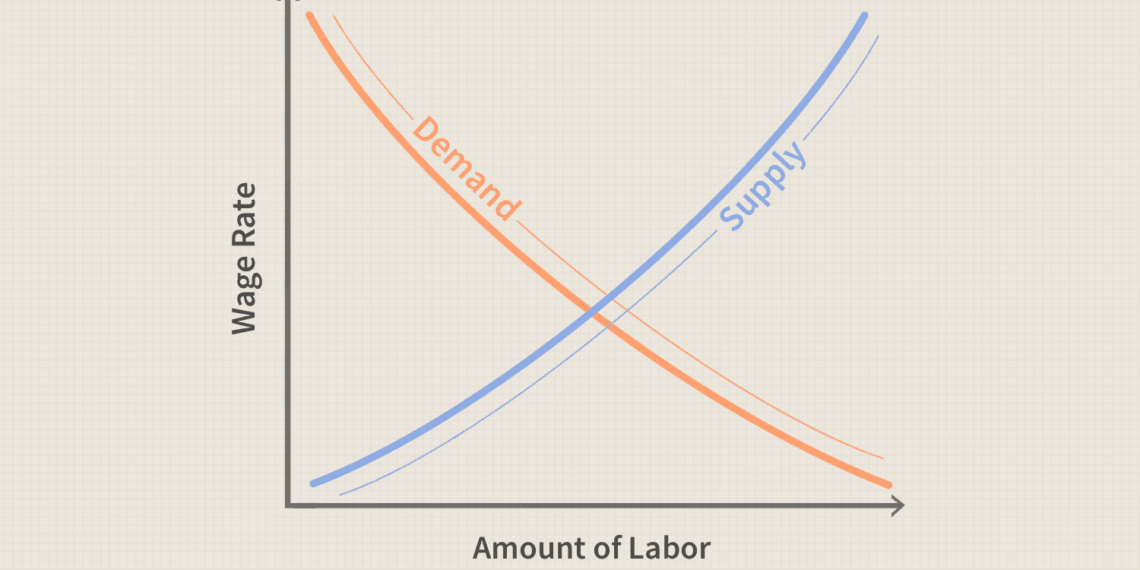Recent labor market indicators from the Bank of Ghana shows that employment conditions in the country had deteriorated in the third quarter of the year.
According to the Bank of Ghana, the total number of private sector’s SSNIT contributors, which partially gauges’ employment conditions, declined to 677,881 in July 2020 compared with 879,485 for a similar period in 2019.
This represents a year-on-year declined of 22.9 percent in SSNIT contributions, suggesting that employment conditions have worsened over the period.
This is according to the September Real Sector Developments report released by the Bank of Ghana.

On a month-on-month basis, the total number of private sector’s SSNIT contributors declined marginally by 3.4 percent.
Cumulatively, for the first seven months of 2020, the total number of private-sector contributors declined to 5,341,912 from 6,098,715 recorded over the corresponding period in 2019.
Another important labor market indicator is the number of jobs advertised in the ‘Daily Graphic’. The central bank indicated that the number of jobs advertised in the ‘Daily Graphic’ in August 2020 decreased relative to the same period in 2019.
The total advertised jobs were 339 as of August 2020 compared with 650 advertised jobs in the corresponding period of 2019. This culminated in a year-on-year decline of 47.8 percent.
These developments, the Bank of Ghana stated, resulted in a decline in the Job Adverts Index to 66.0 in August 2020 from 90.9 in July.
However, the analyses for the first 8 months of the year show that the number of jobs advertised inched up marginally in 2020 compared to the corresponding period in 2019.
The central bank stated that cumulatively, 5,727 advertised jobs were recorded between January and August 2020, compared with 5,578 jobs advertised during the same period in 2019. The difference of 149 job adverts between the two review periods represents an expansion of 2.7 percent.
Further labor market analyses showed that job advertisements on the websites of major job advertising and employment companies also declined substantially on a year-on-year basis.
A total of 2,013 vacancies were posted on the websites of 10 online job advertising and employment companies in August 2020 as compared with 2,742 for the same period in 2019. This shows a year-on-year decline of 26.6 percent.
The number of online job vacancies recorded in the review period however increased marginally by 2.5 percent from 1,963 recorded in July.
The Bank of Ghana further stated that a total of 18,174 jobs were advertised, year-to-date, compared with 24,489 recorded during the same period a year earlier, representing a decline of 25.8 percent.
Labour Market Conditions in Q2 2020
The number of jobs advertised in the “Daily Graphic” during the second quarter of 2020 increased relative to what was observed in the second quarter of 2019. In total, 2,599 job adverts were recorded as compared with 2,148 for the second quarter of 2019, indicating a year-on-year growth of 21.0 percent.
Similarly, the number of job vacancies advertised in the second quarter of 2020 increased by 11.9 percent from 2,322 recorded in the first quarter of 2020.

Sector Distribution and Skill Set of Job Adverts
The Services Sector maintained its dominance as the leading job providing sector in the economy, accounting for 91.6 percent of total job adverts recorded during the second quarter of 2020. This compares with a share of 89.3 percent it recorded in the second quarter of 2019.
Industry followed with a share of 6.5 percent, down from 9.1 percent in the second quarter of 2019. While the Agriculture Sector accounted for 1.8 percent of the job adverts during the period, compared with 1.7 percent of total job adverts recorded for the corresponding quarter of 2019.

Further analysis showed that the main requirements for skilled employees were tertiary education qualification(s) and a minimum of three years’ working experience. This category, classified as Professionals and Technicians, collectively accounted for 57.8 percent of total jobs advertised during the second quarter of 2020 relative to 51.4 percent recorded in the second quarter of 2019.
This was followed by the categories classified as Sales and Other Service Workers which accounted for 37.0 percent in the second quarter of 2020 compared to 29.0 percent in the corresponding quarter of 2019.
Others include Secretarial & Clerical Staff (2.4%), Artisans and Machine Operators (1.5%), and ‘Others’ (1.3%) in the second quarter of 2020 compared to 10.1 percent, 4.1percent, and 5.5 percent recorded in the same quarter of 2019 respectively.





















